Waiting patiently
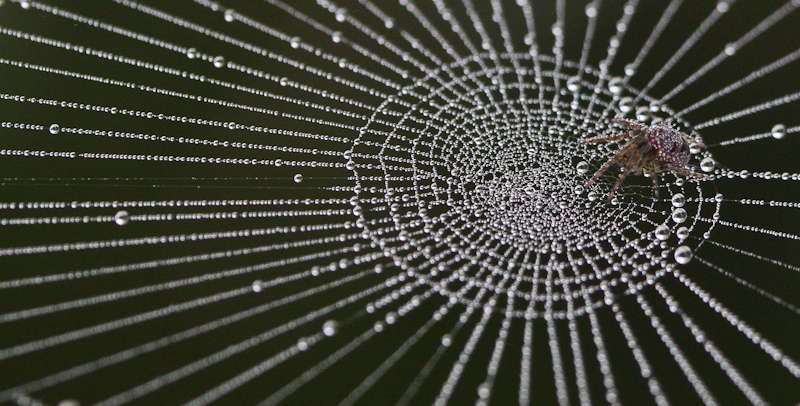 This dew-soaked little red spider is waiting motionless in its web for something tasty to arrive.
This dew-soaked little red spider is waiting motionless in its web for something tasty to arrive.
Canon 40D with Canon EFS f2.8 60mm macro lens, ISO500, 1/200 at f4
[socialring]
 This dew-soaked little red spider is waiting motionless in its web for something tasty to arrive.
This dew-soaked little red spider is waiting motionless in its web for something tasty to arrive.
Canon 40D with Canon EFS f2.8 60mm macro lens, ISO500, 1/200 at f4
[socialring]
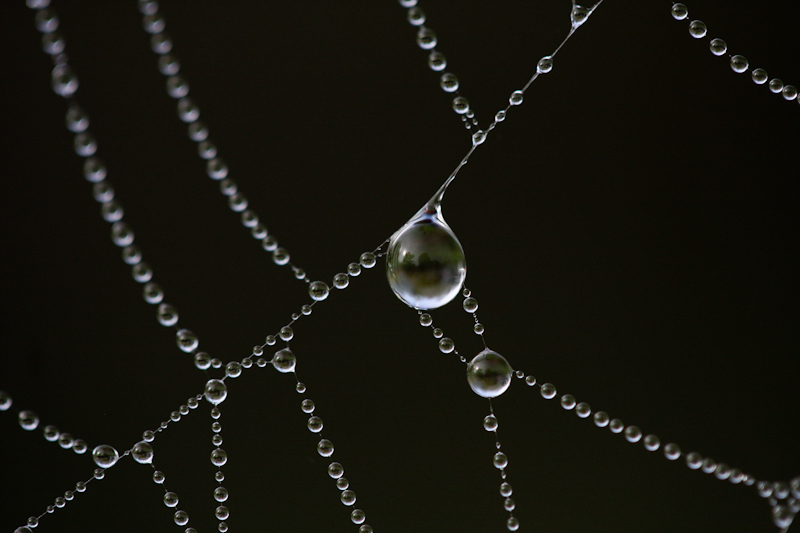
The misty Autumn mornings highlight the webs of the literally millions of spiders living in the woods around our house, each one busily constructing its own little world where it patiently waits for lunch to arrive. The trees and bushes are full of them, with the more enterprising, or maybe foolhardy, spiders slinging their webs across pathways or from one tree to the next. As the sun slowly burns off the mist, the webs light up a glistening display of water droplets on the threads. If there are millions of webs, imagine how many water droplets there must be…
Canon 40D with Canon EFS 60mm f2.8 macro on manual ISO500 1/1250 at f2.8
Full frame shot.
Location: Val Cerfone, Tuscany, Italy
[socialring]
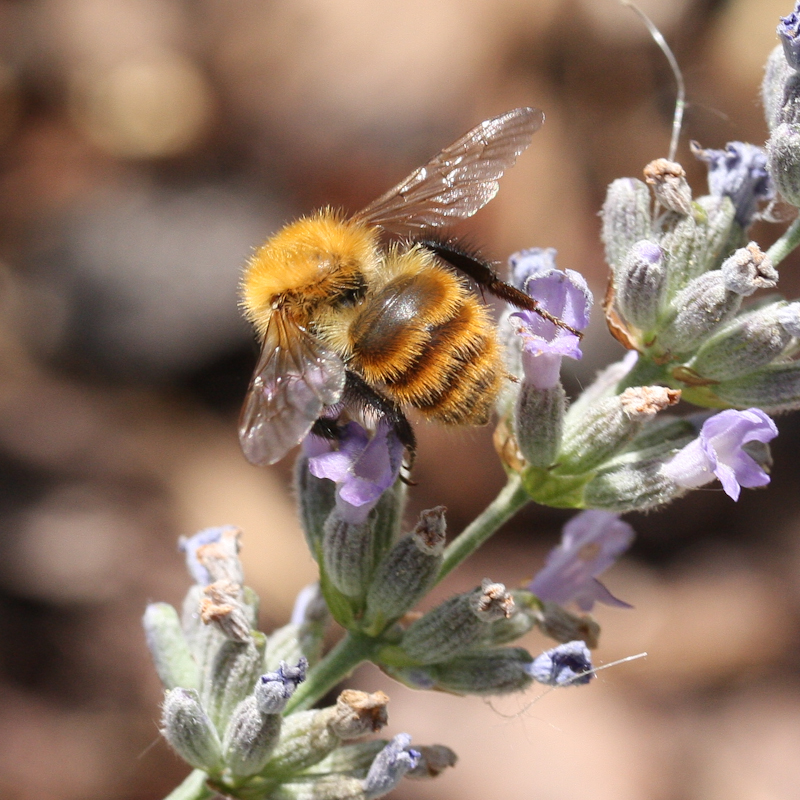
Close up of a small bee busying itself with the lavender.
Canon 40D with Canon 60mm 2.8 EFS Macro lens ISO400 1/400 f8
[socialring]
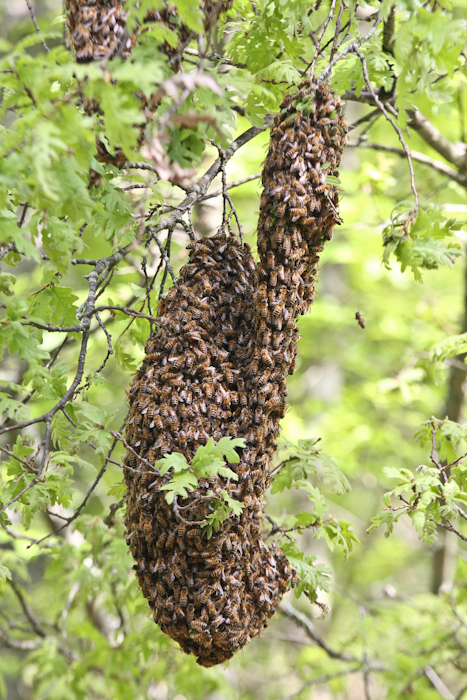
[socialring]
This swarm of honey bees picked out a tree in the valley below our house in Tuscany and has spent the day growing and growing. The were initially several small clusters that eventually fused into one large shape. How long they stay remains to be seen. I took shots from all angles and at all magnifications! – without getting too close, although apparently the bees are not aggresive when they are swarming like this. Some of the shapes resemble other creatures – there’s a leopard gracefully descending the branches, and this one – a sloth or perhaps an orang-utan swinging by one arm.
What is less obvious from the photos is the constant movement over the surface of the swarm and the low buzz surrounding it.

This rather large spider took up residence in a very durable web of his own making next to the steps leading down to the car park from our apartment in Phuket. For a while he was in another web directly over the steps, but found that a little precarious. Either that or he ate one of the residents and decided to move to one side while he digested the unfortunate victim.
He’s gone now, but I find I miss his alluring mask which kind of says, “Come closer, enjoy my party!”
Canon 40D with Canon 70-200 f4.5 L lens at 155mm with Canon 12mm extension tube. ISO500 1/200 at f9 with built-in flash.
[socialring]
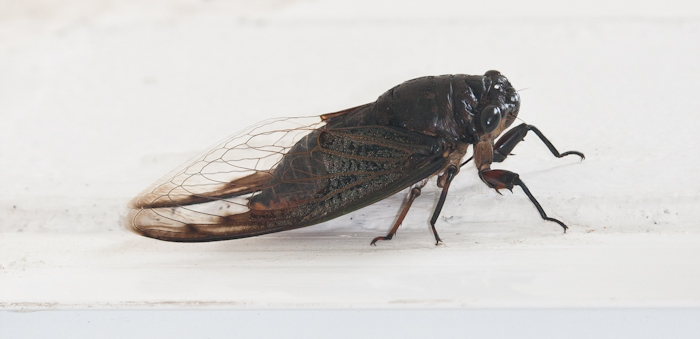
It seems there are dozen of types of cicadas. Whole books are written about them. Their main claim to fame, apart from being a delicacy in Thai and other SE Asian cuisine, is that they are the noisiest bugs around. That fact I can certainly attest to.
We have an apartment in a lovely setting about a mile inland from Kamala Beach in Phuket. We are up a hill so we get a panoramic view of the bay. To the left and rear of our apartment is rain forest, good virgin stuff with hugely tall trees, including, in the season, durians that bear the most foul smelling fruit in the world. There are large Asian squirrels to be seen, some bird life. And cicadas. Millions of them. They are quite staggeringly noisy insects with a tympanic call that can carry a mile that the males make to attract the females. They start at daybreak with a brief morning chorus of about twenty minutes. Then around early – mid afternoon there is a cacophony that is quiet deafening. And then at sunset there is the finale that sounds like an orchestra of power saws in unison. Each species call is slightly different and a female of a given species will only take note of the call from a male of the same species.
Once they have finished, they look around, see the lights on and try to get into the apartment, banging against the windows and screen doors. Looking at that prehistoric exoskeleton, headaches clearly aren’t a problem.
I found this fellow one morning on the wall outside the bedroom. He was patient, allowing me to take many shots. After that, I gave him a gentle nudge under the wings and he flew away, the beating of the wings sounding like a helicopter.
Head to end of folded wingtips, he was about 2.5″ long.
Canon 40D with Canon 70-200mm f4 IS lens at 116mm and with a Canon 12mm extension tube. ISO800 1/100 at f6.3 with flash from the built-in flashgun. Adjusted and cropped in Lightroom
Location: Phuket, Thailand